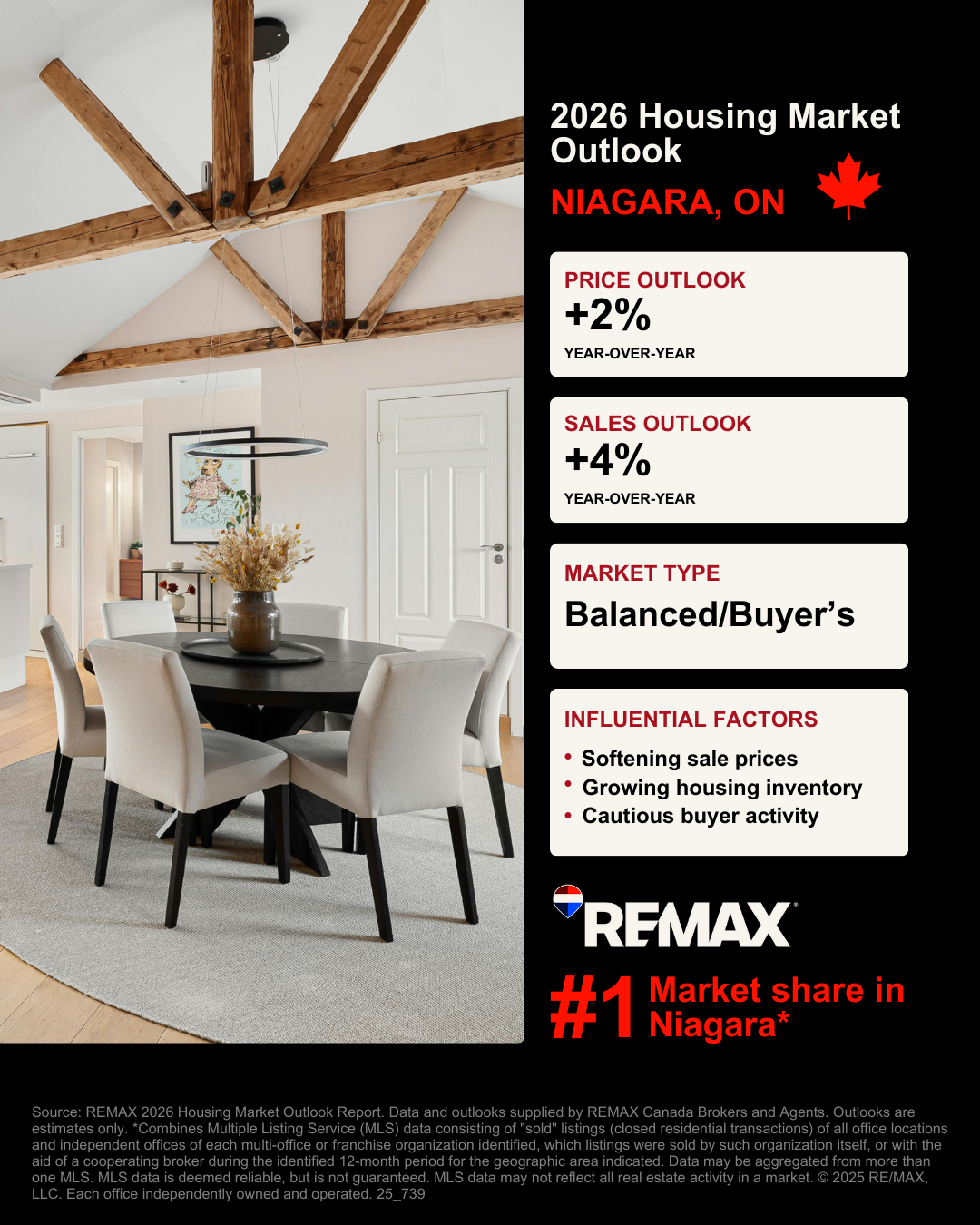The average residential sale price in Niagara has decreased by 2.4 per cent across all property types between 2024 and 2025 from $693,297 to $676,670. The number of sales transactions decreased by 7.7 per cent for the same time period (from 5,836 to 5,417). The total number of listings increased by 3.5 per cent (from 15,809 in 2024 to 16,362 in 2025). Average residential sale prices will increase by two per cent going into 2026, compared to 2025. Sales are anticipated to rise by four per cent going into 2026, compared to 2025.
Trends in the Niagara Region Housing Market
Looking ahead to 2026, Niagara will transition to be a balanced-to-buyers market. The top three neighbourhoods anticipated to be the most desirable in the region in 2026 are Fonthill, Lincoln, and Beamsville. Each offers a balance of small-town charm, growing amenities, and proximity to key employment hubs. Single-detached homes are expected to see the strongest demand and sales activity in the region in 2026. Buyers continue to prioritize space, privacy, and long-term stability, particularly as affordability improves and family needs evolve.
Buying/Selling Trends for homebuyers and sellers looking ahead to 2026:
- First-time Homebuyers are buying 650,000 to $700,000.
- Move Up/Over Homebuyers are buying homes in the $800,000 to $900,000 range as homes are becoming more affordable with lowering interest rates.
- Retirees are buying 600,000 to $650,000.
- New-home construction activity is comprised of traditional townhomes. New developments are coming to the region.
The HST exemption on new homes for first-time buyers are helping make purchases more affordable in the region. Meanwhile, available listings are being snapped up quickly, showing that demand is still strong. Rising rental prices are pushing some first-time buyers to consider purchasing sooner. With decent demand but limited options on the market, many are weighing the benefits of buying over renting.
Lower rental prices are making it more attractive for local investors to buy. With property more affordable, many see ownership as a better long-term opportunity than renting. 2026 could be a strong year to buy, especially for single-family homes, which are expected to be in high demand. Buyers should still be mindful of potential inventory challenges, but well-priced homes are likely to move quickly.
Heading into 2026, affordability will continue to be the main driver for housing in the region. While declining interest rates provide some relief, making homes slightly more affordable, the overall pace will still depend on how many buyers can comfortably enter the market. The most important factor shaping housing in the region is the availability of prime-value luxury homes, which continue to attract buyers. In 2026, this segment is expected to remain strong as interest in higher-end properties grows, while other areas, like rentals, may see steadier demand but fewer dramatic price shifts.
Policy changes won't affect the market as much next year given the present buyer activity is heavily needs-based. Many who previously sat on the sidelines are returning, focused on securing homes that meet their primary requirements that the region offers. Technology is helping buyers see the potential in older homes, with AI tools showing how an older property could be successfully remodeled. This makes it easier for buyers to visualize their ideal space and consider options they might have overlooked before. Seniors are returning to Niagara, drawn by its lifestyle and amenities, while more first-time buyers are also entering the market thanks to the upcoming GO transit service. Together, these groups are bringing renewed energy and demand to the region.







